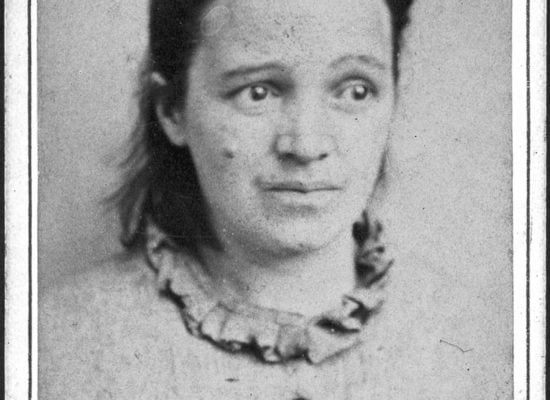Patient in head restrain at West Riding Lunatic Asylum, York, UK, (circa 1869).
Photo: Henry Clarke.
Woman suffering from acute melancholia at West Riding Lunatic Asylum, York, UK, (circa 1869).
Photo: Henry Clarke, courtesy Wellcome Library, London.
Man suffering from mania of suspicion at West Riding Lunatic Asylum, York, UK, (circa 1869).
Photo: Henry Clarke, courtesy Wellcome Library, London.
'Senile dementia' patient at West Riding Lunatic Asylum, York, UK, (circa 1869).
Photo: Henry Clarke, courtesy Wellcome Library, London.
Man suffering from consecutive dementia at West Riding Lunatic Asylum, York, UK, (circa 1869).
Photo: Henry Clarke, courtesy Wellcome Library, London.
'Simple mania' patient at West Riding Lunatic Asylum, York, UK, (circa 1869).
Photo: Henry Clarke, courtesy Wellcome Library, London.
'Imbecility' patient at West Riding Lunatic Asylum, York, UK, (circa 1869).
Photo: Henry Clarke, courtesy Wellcome Library, London.
'Monomania of pride' patient at West Riding Lunatic Asylum, York, UK, (circa 1869).
Photo: James Crichton-Browne, courtesy Wellcome Library, London.
Woman suffering from general paralysis at West Riding Lunatic Asylum, York, UK, (circa 1869).
Photo: James Crichton-Browne, courtesy Wellcome Library, London. Photo: James Crichton-Browne, courtesy Wellcome Library, London.
'Organic dementia' patient at West Riding Lunatic Asylum, York, UK, (circa 1869).
Photo: Henry Clarke, courtesy Wellcome Library, London.
Woman suffering from chronic mania at West Riding Lunatic Asylum, York, UK, (circa 1869).
Photo: James Crichton-Browne, courtesy Wellcome Library, London.
'Consecutive dementia' patient at West Riding Lunatic Asylum, York, UK, (circa 1869).
Photo: Henry Clarke, courtesy Wellcome Library, London.
Monomania of pride patient at West Riding Lunatic Asylum, York, UK, (circa 1869).
Photo: James Crichton-Browne, courtesy Wellcome Library, London.
Prisoner no. 2517, head supported by warden, at West Riding Lunatic Asylum, York, UK, (circa 1869).
Photo: James Crichton-Browne, courtesy Wellcome Library, London.
West Riding Lunatic Asylum, York, UK.
James Crichton Brown.
Photo: J. Russell & Sons.
Disturbing Victorian mental illness photographs taken at the West Riding Pauper Lunatic Asylum provide an important record of major breakthroughs in the treatment of the mentally ill. Taken in 1869, the images show patients thought to be suffering from “imbecility,” “simple mania,” and “acute melancholia.”
Today, the detailed records kept by West Riding superintendent James Crichton-Browne, including these photos, are considered to be so important to the history of medicine that the collection is protected by UNESCO.
Though the somewhat-harrowing photos may seem disturbing to modern audiences, with some patients bound by restraints, the West Riding facility was actually quite a step up from earlier treatments of the mentally ill, like at London’s Bethlem Royal Hospital, better known as “Bedlam”, where mental patients were somewhat of a public spectacle.
Instead of being chained to walls, West Riding patients were allowed to work at on-site facilities including a bakery and butcher shop, and to take part in leisurely activities.
The institution was founded by William Tuke, who was moved to provide more humane treatment of mental patients by his compassionate Quaker belief in the sanctity of life. The ethically-minded facility also made scientific breakthroughs under Crichton-Browne, who opened an anatomy, neuropathology, and histology laboratory.
Of course, that doesn’t mean that some treatments used at West Riding aren’t laughable today. Patients were apparently encouraged to spin around in a chair with the belief that it would counteract the spinning in their heads. Crichton-Browne also tested out the healing properties of such substances as cannabis, nicotine, alcohol, and nitrous oxide.
If born today, many of West Riding’s patients would likely never have been institutionalized, thanks to a better understanding of mental illness pioneered by Crichton-Browne and other pioneering medical professionals.
For more historical photo slideshows on artnet News see:
